Aerospace
Automotive
Construction
Electronics
Marine
Carbon Fiber Composites
Glass Fiber Composites
Aramid Fiber Composites
Natural Fiber Composites
Hybrid Composites
Layup
Filament Winding
Pultrusion
Resin Infusion
Out-of-Autoclave
Thermosetting Polymer
Thermoplastic Polymer
Metal Matrix
Ceramic Matrix
North America
Europe
South America
Asia Pacific
Middle East and Africa
North America Outlook (USD Billion, 2019-2035)
North America Advanced Composites Market by Application Type
Aerospace
Automotive
Construction
Electronics
Marine
North America Advanced Composites Market by Type
Carbon Fiber Composites
Glass Fiber Composites
Aramid Fiber Composites
Natural Fiber Composites
Hybrid Composites
North America Advanced Composites Market by Manufacturing Process Type
Layup
Filament Winding
Pultrusion
Resin Infusion
Out-of-Autoclave
North America Advanced Composites Market by Matrix Type
Thermosetting Polymer
Thermoplastic Polymer
Metal Matrix
Ceramic Matrix
North America Advanced Composites Market by Regional Type
US
Canada
US Outlook (USD Billion, 2019-2035)
US Advanced Composites Market by Application Type
Aerospace
Automotive
Construction
Electronics
Marine
US Advanced Composites Market by Type
Carbon Fiber Composites
Glass Fiber Composites
Aramid Fiber Composites
Natural Fiber Composites
Hybrid Composites
US Advanced Composites Market by Manufacturing Process Type
Layup
Filament Winding
Pultrusion
Resin Infusion
Out-of-Autoclave
US Advanced Composites Market by Matrix Type
Thermosetting Polymer
Thermoplastic Polymer
Metal Matrix
Ceramic Matrix
CANADA Outlook (USD Billion, 2019-2035)
CANADA Advanced Composites Market by Application Type
Aerospace
Automotive
Construction
Electronics
Marine
CANADA Advanced Composites Market by Type
Carbon Fiber Composites
Glass Fiber Composites
Aramid Fiber Composites
Natural Fiber Composites
Hybrid Composites
CANADA Advanced Composites Market by Manufacturing Process Type
Layup
Filament Winding
Pultrusion
Resin Infusion
Out-of-Autoclave
CANADA Advanced Composites Market by Matrix Type
Thermosetting Polymer
Thermoplastic Polymer
Metal Matrix
Ceramic Matrix
Europe Outlook (USD Billion, 2019-2035)
Europe Advanced Composites Market by Application Type
Aerospace
Automotive
Construction
Electronics
Marine
Europe Advanced Composites Market by Type
Carbon Fiber Composites
Glass Fiber Composites
Aramid Fiber Composites
Natural Fiber Composites
Hybrid Composites
Europe Advanced Composites Market by Manufacturing Process Type
Layup
Filament Winding
Pultrusion
Resin Infusion
Out-of-Autoclave
Europe Advanced Composites Market by Matrix Type
Thermosetting Polymer
Thermoplastic Polymer
Metal Matrix
Ceramic Matrix
Europe Advanced Composites Market by Regional Type
Germany
UK
France
Russia
Italy
Spain
Rest of Europe
GERMANY Outlook (USD Billion, 2019-2035)
GERMANY Advanced Composites Market by Application Type
Aerospace
Automotive
Construction
Electronics
Marine
GERMANY Advanced Composites Market by Type
Carbon Fiber Composites
Glass Fiber Composites
Aramid Fiber Composites
Natural Fiber Composites
Hybrid Composites
GERMANY Advanced Composites Market by Manufacturing Process Type
Layup
Filament Winding
Pultrusion
Resin Infusion
Out-of-Autoclave
GERMANY Advanced Composites Market by Matrix Type
Thermosetting Polymer
Thermoplastic Polymer
Metal Matrix
Ceramic Matrix
UK Outlook (USD Billion, 2019-2035)
UK Advanced Composites Market by Application Type
Aerospace
Automotive
Construction
Electronics
Marine
UK Advanced Composites Market by Type
Carbon Fiber Composites
Glass Fiber Composites
Aramid Fiber Composites
Natural Fiber Composites
Hybrid Composites
UK Advanced Composites Market by Manufacturing Process Type
Layup
Filament Winding
Pultrusion
Resin Infusion
Out-of-Autoclave
UK Advanced Composites Market by Matrix Type
Thermosetting Polymer
Thermoplastic Polymer
Metal Matrix
Ceramic Matrix
FRANCE Outlook (USD Billion, 2019-2035)
FRANCE Advanced Composites Market by Application Type
Aerospace
Automotive
Construction
Electronics
Marine
FRANCE Advanced Composites Market by Type
Carbon Fiber Composites
Glass Fiber Composites
Aramid Fiber Composites
Natural Fiber Composites
Hybrid Composites
FRANCE Advanced Composites Market by Manufacturing Process Type
Layup
Filament Winding
Pultrusion
Resin Infusion
Out-of-Autoclave
FRANCE Advanced Composites Market by Matrix Type
Thermosetting Polymer
Thermoplastic Polymer
Metal Matrix
Ceramic Matrix
RUSSIA Outlook (USD Billion, 2019-2035)
RUSSIA Advanced Composites Market by Application Type
Aerospace
Automotive
Construction
Electronics
Marine
RUSSIA Advanced Composites Market by Type
Carbon Fiber Composites
Glass Fiber Composites
Aramid Fiber Composites
Natural Fiber Composites
Hybrid Composites
RUSSIA Advanced Composites Market by Manufacturing Process Type
Layup
Filament Winding
Pultrusion
Resin Infusion
Out-of-Autoclave
RUSSIA Advanced Composites Market by Matrix Type
Thermosetting Polymer
Thermoplastic Polymer
Metal Matrix
Ceramic Matrix
ITALY Outlook (USD Billion, 2019-2035)
ITALY Advanced Composites Market by Application Type
Aerospace
Automotive
Construction
Electronics
Marine
ITALY Advanced Composites Market by Type
Carbon Fiber Composites
Glass Fiber Composites
Aramid Fiber Composites
Natural Fiber Composites
Hybrid Composites
ITALY Advanced Composites Market by Manufacturing Process Type
Layup
Filament Winding
Pultrusion
Resin Infusion
Out-of-Autoclave
ITALY Advanced Composites Market by Matrix Type
Thermosetting Polymer
Thermoplastic Polymer
Metal Matrix
Ceramic Matrix
SPAIN Outlook (USD Billion, 2019-2035)
SPAIN Advanced Composites Market by Application Type
Aerospace
Automotive
Construction
Electronics
Marine
SPAIN Advanced Composites Market by Type
Carbon Fiber Composites
Glass Fiber Composites
Aramid Fiber Composites
Natural Fiber Composites
Hybrid Composites
SPAIN Advanced Composites Market by Manufacturing Process Type
Layup
Filament Winding
Pultrusion
Resin Infusion
Out-of-Autoclave
SPAIN Advanced Composites Market by Matrix Type
Thermosetting Polymer
Thermoplastic Polymer
Metal Matrix
Ceramic Matrix
REST OF EUROPE Outlook (USD Billion, 2019-2035)
REST OF EUROPE Advanced Composites Market by Application Type
Aerospace
Automotive
Construction
Electronics
Marine
REST OF EUROPE Advanced Composites Market by Type
Carbon Fiber Composites
Glass Fiber Composites
Aramid Fiber Composites
Natural Fiber Composites
Hybrid Composites
REST OF EUROPE Advanced Composites Market by Manufacturing Process Type
Layup
Filament Winding
Pultrusion
Resin Infusion
Out-of-Autoclave
REST OF EUROPE Advanced Composites Market by Matrix Type
Thermosetting Polymer
Thermoplastic Polymer
Metal Matrix
Ceramic Matrix
APAC Outlook (USD Billion, 2019-2035)
APAC Advanced Composites Market by Application Type
Aerospace
Automotive
Construction
Electronics
Marine
APAC Advanced Composites Market by Type
Carbon Fiber Composites
Glass Fiber Composites
Aramid Fiber Composites
Natural Fiber Composites
Hybrid Composites
APAC Advanced Composites Market by Manufacturing Process Type
Layup
Filament Winding
Pultrusion
Resin Infusion
Out-of-Autoclave
APAC Advanced Composites Market by Matrix Type
Thermosetting Polymer
Thermoplastic Polymer
Metal Matrix
Ceramic Matrix
APAC Advanced Composites Market by Regional Type
China
India
Japan
South Korea
Malaysia
Thailand
Indonesia
Rest of APAC
CHINA Outlook (USD Billion, 2019-2035)
CHINA Advanced Composites Market by Application Type
Aerospace
Automotive
Construction
Electronics
Marine
CHINA Advanced Composites Market by Type
Carbon Fiber Composites
Glass Fiber Composites
Aramid Fiber Composites
Natural Fiber Composites
Hybrid Composites
CHINA Advanced Composites Market by Manufacturing Process Type
Layup
Filament Winding
Pultrusion
Resin Infusion
Out-of-Autoclave
CHINA Advanced Composites Market by Matrix Type
Thermosetting Polymer
Thermoplastic Polymer
Metal Matrix
Ceramic Matrix
INDIA Outlook (USD Billion, 2019-2035)
INDIA Advanced Composites Market by Application Type
Aerospace
Automotive
Construction
Electronics
Marine
INDIA Advanced Composites Market by Type
Carbon Fiber Composites
Glass Fiber Composites
Aramid Fiber Composites
Natural Fiber Composites
Hybrid Composites
INDIA Advanced Composites Market by Manufacturing Process Type
Layup
Filament Winding
Pultrusion
Resin Infusion
Out-of-Autoclave
INDIA Advanced Composites Market by Matrix Type
Thermosetting Polymer
Thermoplastic Polymer
Metal Matrix
Ceramic Matrix
JAPAN Outlook (USD Billion, 2019-2035)
JAPAN Advanced Composites Market by Application Type
Aerospace
Automotive
Construction
Electronics
Marine
JAPAN Advanced Composites Market by Type
Carbon Fiber Composites
Glass Fiber Composites
Aramid Fiber Composites
Natural Fiber Composites
Hybrid Composites
JAPAN Advanced Composites Market by Manufacturing Process Type
Layup
Filament Winding
Pultrusion
Resin Infusion
Out-of-Autoclave
JAPAN Advanced Composites Market by Matrix Type
Thermosetting Polymer
Thermoplastic Polymer
Metal Matrix
Ceramic Matrix
SOUTH KOREA Outlook (USD Billion, 2019-2035)
SOUTH KOREA Advanced Composites Market by Application Type
Aerospace
Automotive
Construction
Electronics
Marine
SOUTH KOREA Advanced Composites Market by Type
Carbon Fiber Composites
Glass Fiber Composites
Aramid Fiber Composites
Natural Fiber Composites
Hybrid Composites
SOUTH KOREA Advanced Composites Market by Manufacturing Process Type
Layup
Filament Winding
Pultrusion
Resin Infusion
Out-of-Autoclave
SOUTH KOREA Advanced Composites Market by Matrix Type
Thermosetting Polymer
Thermoplastic Polymer
Metal Matrix
Ceramic Matrix
MALAYSIA Outlook (USD Billion, 2019-2035)
MALAYSIA Advanced Composites Market by Application Type
Aerospace
Automotive
Construction
Electronics
Marine
MALAYSIA Advanced Composites Market by Type
Carbon Fiber Composites
Glass Fiber Composites
Aramid Fiber Composites
Natural Fiber Composites
Hybrid Composites
MALAYSIA Advanced Composites Market by Manufacturing Process Type
Layup
Filament Winding
Pultrusion
Resin Infusion
Out-of-Autoclave
MALAYSIA Advanced Composites Market by Matrix Type
Thermosetting Polymer
Thermoplastic Polymer
Metal Matrix
Ceramic Matrix
THAILAND Outlook (USD Billion, 2019-2035)
THAILAND Advanced Composites Market by Application Type
Aerospace
Automotive
Construction
Electronics
Marine
THAILAND Advanced Composites Market by Type
Carbon Fiber Composites
Glass Fiber Composites
Aramid Fiber Composites
Natural Fiber Composites
Hybrid Composites
THAILAND Advanced Composites Market by Manufacturing Process Type
Layup
Filament Winding
Pultrusion
Resin Infusion
Out-of-Autoclave
THAILAND Advanced Composites Market by Matrix Type
Thermosetting Polymer
Thermoplastic Polymer
Metal Matrix
Ceramic Matrix
INDONESIA Outlook (USD Billion, 2019-2035)
INDONESIA Advanced Composites Market by Application Type
Aerospace
Automotive
Construction
Electronics
Marine
INDONESIA Advanced Composites Market by Type
Carbon Fiber Composites
Glass Fiber Composites
Aramid Fiber Composites
Natural Fiber Composites
Hybrid Composites
INDONESIA Advanced Composites Market by Manufacturing Process Type
Layup
Filament Winding
Pultrusion
Resin Infusion
Out-of-Autoclave
INDONESIA Advanced Composites Market by Matrix Type
Thermosetting Polymer
Thermoplastic Polymer
Metal Matrix
Ceramic Matrix
REST OF APAC Outlook (USD Billion, 2019-2035)
REST OF APAC Advanced Composites Market by Application Type
Aerospace
Automotive
Construction
Electronics
Marine
REST OF APAC Advanced Composites Market by Type
Carbon Fiber Composites
Glass Fiber Composites
Aramid Fiber Composites
Natural Fiber Composites
Hybrid Composites
REST OF APAC Advanced Composites Market by Manufacturing Process Type
Layup
Filament Winding
Pultrusion
Resin Infusion
Out-of-Autoclave
REST OF APAC Advanced Composites Market by Matrix Type
Thermosetting Polymer
Thermoplastic Polymer
Metal Matrix
Ceramic Matrix
South America Outlook (USD Billion, 2019-2035)
South America Advanced Composites Market by Application Type
Aerospace
Automotive
Construction
Electronics
Marine
South America Advanced Composites Market by Type
Carbon Fiber Composites
Glass Fiber Composites
Aramid Fiber Composites
Natural Fiber Composites
Hybrid Composites
South America Advanced Composites Market by Manufacturing Process Type
Layup
Filament Winding
Pultrusion
Resin Infusion
Out-of-Autoclave
South America Advanced Composites Market by Matrix Type
Thermosetting Polymer
Thermoplastic Polymer
Metal Matrix
Ceramic Matrix
South America Advanced Composites Market by Regional Type
Brazil
Mexico
Argentina
Rest of South America
BRAZIL Outlook (USD Billion, 2019-2035)
BRAZIL Advanced Composites Market by Application Type
Aerospace
Automotive
Construction
Electronics
Marine
BRAZIL Advanced Composites Market by Type
Carbon Fiber Composites
Glass Fiber Composites
Aramid Fiber Composites
Natural Fiber Composites
Hybrid Composites
BRAZIL Advanced Composites Market by Manufacturing Process Type
Layup
Filament Winding
Pultrusion
Resin Infusion
Out-of-Autoclave
BRAZIL Advanced Composites Market by Matrix Type
Thermosetting Polymer
Thermoplastic Polymer
Metal Matrix
Ceramic Matrix
MEXICO Outlook (USD Billion, 2019-2035)
MEXICO Advanced Composites Market by Application Type
Aerospace
Automotive
Construction
Electronics
Marine
MEXICO Advanced Composites Market by Type
Carbon Fiber Composites
Glass Fiber Composites
Aramid Fiber Composites
Natural Fiber Composites
Hybrid Composites
MEXICO Advanced Composites Market by Manufacturing Process Type
Layup
Filament Winding
Pultrusion
Resin Infusion
Out-of-Autoclave
MEXICO Advanced Composites Market by Matrix Type
Thermosetting Polymer
Thermoplastic Polymer
Metal Matrix
Ceramic Matrix
ARGENTINA Outlook (USD Billion, 2019-2035)
ARGENTINA Advanced Composites Market by Application Type
Aerospace
Automotive
Construction
Electronics
Marine
ARGENTINA Advanced Composites Market by Type
Carbon Fiber Composites
Glass Fiber Composites
Aramid Fiber Composites
Natural Fiber Composites
Hybrid Composites
ARGENTINA Advanced Composites Market by Manufacturing Process Type
Layup
Filament Winding
Pultrusion
Resin Infusion
Out-of-Autoclave
ARGENTINA Advanced Composites Market by Matrix Type
Thermosetting Polymer
Thermoplastic Polymer
Metal Matrix
Ceramic Matrix
REST OF SOUTH AMERICA Outlook (USD Billion, 2019-2035)
REST OF SOUTH AMERICA Advanced Composites Market by Application Type
Aerospace
Automotive
Construction
Electronics
Marine
REST OF SOUTH AMERICA Advanced Composites Market by Type
Carbon Fiber Composites
Glass Fiber Composites
Aramid Fiber Composites
Natural Fiber Composites
Hybrid Composites
REST OF SOUTH AMERICA Advanced Composites Market by Manufacturing Process Type
Layup
Filament Winding
Pultrusion
Resin Infusion
Out-of-Autoclave
REST OF SOUTH AMERICA Advanced Composites Market by Matrix Type
Thermosetting Polymer
Thermoplastic Polymer
Metal Matrix
Ceramic Matrix
MEA Outlook (USD Billion, 2019-2035)
MEA Advanced Composites Market by Application Type
Aerospace
Automotive
Construction
Electronics
Marine
MEA Advanced Composites Market by Type
Carbon Fiber Composites
Glass Fiber Composites
Aramid Fiber Composites
Natural Fiber Composites
Hybrid Composites
MEA Advanced Composites Market by Manufacturing Process Type
Layup
Filament Winding
Pultrusion
Resin Infusion
Out-of-Autoclave
MEA Advanced Composites Market by Matrix Type
Thermosetting Polymer
Thermoplastic Polymer
Metal Matrix
Ceramic Matrix
MEA Advanced Composites Market by Regional Type
GCC Countries
South Africa
Rest of MEA
GCC COUNTRIES Outlook (USD Billion, 2019-2035)
GCC COUNTRIES Advanced Composites Market by Application Type
Aerospace
Automotive
Construction
Electronics
Marine
GCC COUNTRIES Advanced Composites Market by Type
Carbon Fiber Composites
Glass Fiber Composites
Aramid Fiber Composites
Natural Fiber Composites
Hybrid Composites
GCC COUNTRIES Advanced Composites Market by Manufacturing Process Type
Layup
Filament Winding
Pultrusion
Resin Infusion
Out-of-Autoclave
GCC COUNTRIES Advanced Composites Market by Matrix Type
Thermosetting Polymer
Thermoplastic Polymer
Metal Matrix
Ceramic Matrix
SOUTH AFRICA Outlook (USD Billion, 2019-2035)
SOUTH AFRICA Advanced Composites Market by Application Type
Aerospace
Automotive
Construction
Electronics
Marine
SOUTH AFRICA Advanced Composites Market by Type
Carbon Fiber Composites
Glass Fiber Composites
Aramid Fiber Composites
Natural Fiber Composites
Hybrid Composites
SOUTH AFRICA Advanced Composites Market by Manufacturing Process Type
Layup
Filament Winding
Pultrusion
Resin Infusion
Out-of-Autoclave
SOUTH AFRICA Advanced Composites Market by Matrix Type
Thermosetting Polymer
Thermoplastic Polymer
Metal Matrix
Ceramic Matrix
REST OF MEA Outlook (USD Billion, 2019-2035)
REST OF MEA Advanced Composites Market by Application Type
Aerospace
Automotive
Construction
Electronics
Marine
REST OF MEA Advanced Composites Market by Type
Carbon Fiber Composites
Glass Fiber Composites
Aramid Fiber Composites
Natural Fiber Composites
Hybrid Composites
REST OF MEA Advanced Composites Market by Manufacturing Process Type
Layup
Filament Winding
Pultrusion
Resin Infusion
Out-of-Autoclave
REST OF MEA Advanced Composites Market by Matrix Type
Thermosetting Polymer
Thermoplastic Polymer
Metal Matrix
Ceramic Matrix
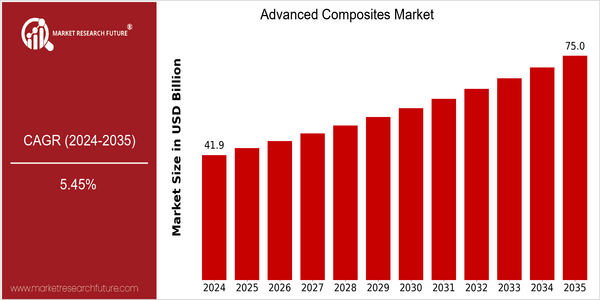
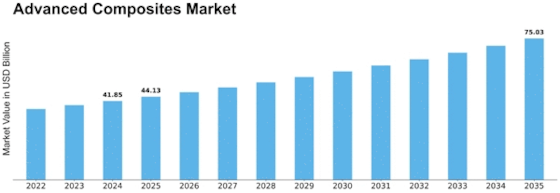

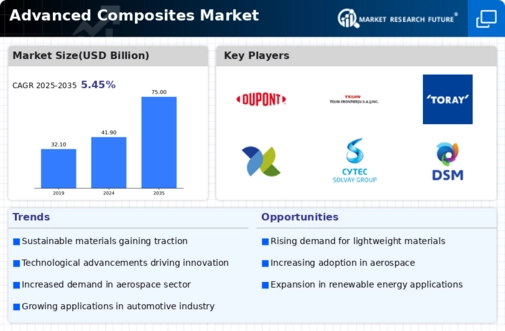
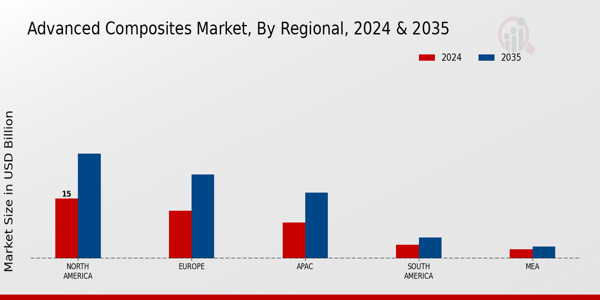



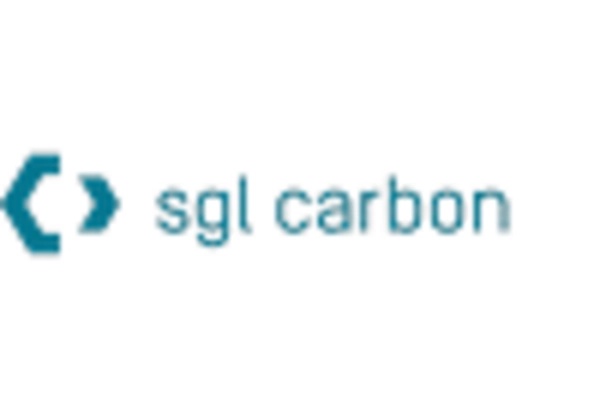
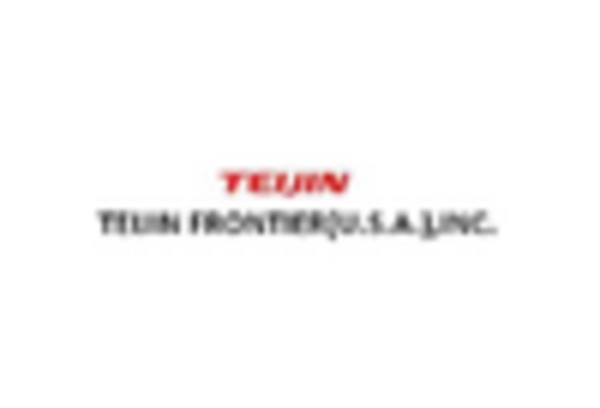
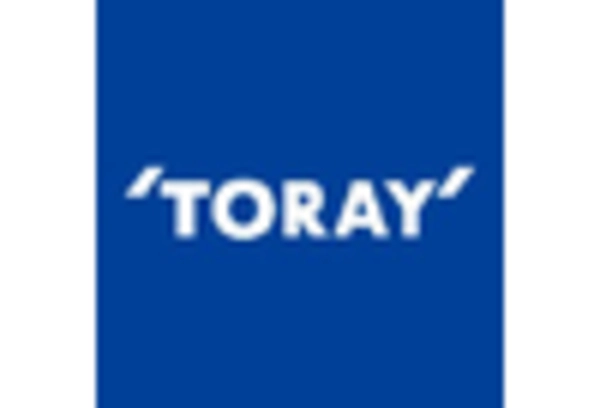









Leave a Comment